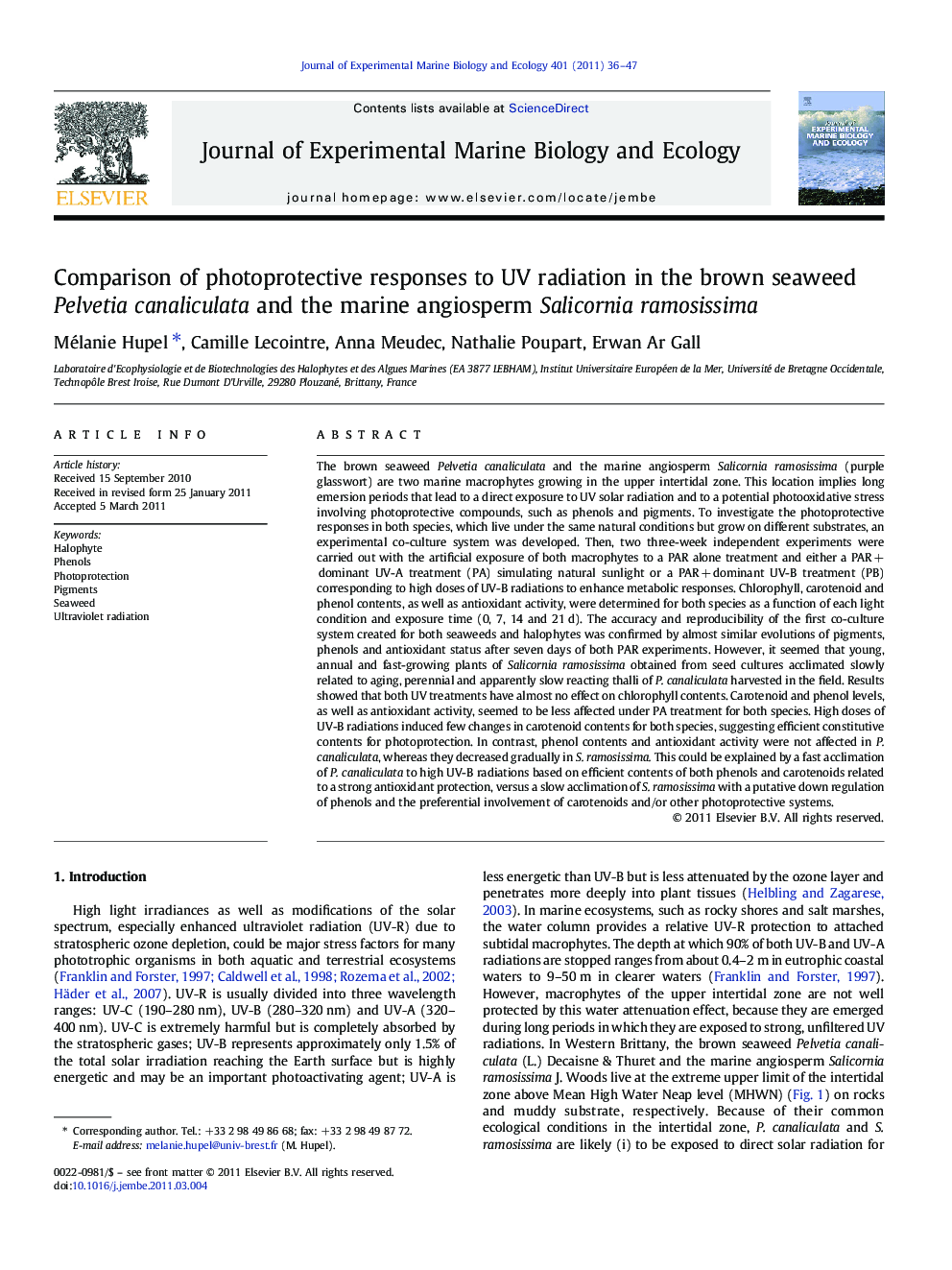| Article ID | Journal | Published Year | Pages | File Type |
|---|---|---|---|---|
| 4396313 | Journal of Experimental Marine Biology and Ecology | 2011 | 12 Pages |
The brown seaweed Pelvetia canaliculata and the marine angiosperm Salicornia ramosissima (purple glasswort) are two marine macrophytes growing in the upper intertidal zone. This location implies long emersion periods that lead to a direct exposure to UV solar radiation and to a potential photooxidative stress involving photoprotective compounds, such as phenols and pigments. To investigate the photoprotective responses in both species, which live under the same natural conditions but grow on different substrates, an experimental co-culture system was developed. Then, two three-week independent experiments were carried out with the artificial exposure of both macrophytes to a PAR alone treatment and either a PAR + dominant UV-A treatment (PA) simulating natural sunlight or a PAR + dominant UV-B treatment (PB) corresponding to high doses of UV-B radiations to enhance metabolic responses. Chlorophyll, carotenoid and phenol contents, as well as antioxidant activity, were determined for both species as a function of each light condition and exposure time (0, 7, 14 and 21 d). The accuracy and reproducibility of the first co-culture system created for both seaweeds and halophytes was confirmed by almost similar evolutions of pigments, phenols and antioxidant status after seven days of both PAR experiments. However, it seemed that young, annual and fast-growing plants of Salicornia ramosissima obtained from seed cultures acclimated slowly related to aging, perennial and apparently slow reacting thalli of P. canaliculata harvested in the field. Results showed that both UV treatments have almost no effect on chlorophyll contents. Carotenoid and phenol levels, as well as antioxidant activity, seemed to be less affected under PA treatment for both species. High doses of UV-B radiations induced few changes in carotenoid contents for both species, suggesting efficient constitutive contents for photoprotection. In contrast, phenol contents and antioxidant activity were not affected in P. canaliculata, whereas they decreased gradually in S. ramosissima. This could be explained by a fast acclimation of P. canaliculata to high UV-B radiations based on efficient contents of both phenols and carotenoids related to a strong antioxidant protection, versus a slow acclimation of S. ramosissima with a putative down regulation of phenols and the preferential involvement of carotenoids and/or other photoprotective systems.
Research highlights► Accuracy of a co-culture system for both halophytes and seaweeds. ► Fast acclimation or tolerance of P. canaliculata to high doses of UV-B radiations. ► Slow acclimation or sensitivity of S. ramosissima to high doses of UV-B radiations. ► Strong implication of phenols and carotenoids in photoprotection.
